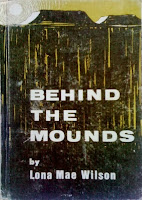“King Cotton-whose lint and seed in the Mississippi Delta
alone this past season were valued at over $200,000,000-will receive royal
tribute from at least four Delta counties planning extensive observances for
National merchants throughout the 18 Delta and part-Delta counties also are
expected to join in local promotion of cotton products, according Delta
Council. Leflore, Coahoma, Bolivar and Sunflower are the counties planing
detailed activities during Cotton Week.” ----The Delta Democrat-Times, May 6, 1953
Cotton Style Show Luncheon
April 28, 1949
Clarksdale, Mississippi
(From the
Souvenir Menu)
----
Planter’s
Plantation Punch
Hors
d’oeuvres
Spiced Coahoma Ham Breast of Turkey
Carrot
Curls Pickle Sticks
Creole Casserole Asparagus Mousse
Hot
Rolls
Cranberry
Salad Supreme
Cotton
Bale Ice Cream Mold Cotton
Blossom Cakes
Coffee
Cotton
Square Mints
----
(The recipes
from Favorite Menus and Recipes by the Coahoma Woman’s Club, Coahoma, MS
N.B. Recipes
are not changed, they are rewritten as they appear in original document.)
Planter’s Plantation Punch
1 can orange juice (46 ounce
can)
1 can pineapple juice (46 oz.)
1 qt. ginger ale
1 qt. lemon sherbet
Cool punch bowl and cool
juices. Put sherbet into punch
bowl. Add juices with ginger ale last.
Asparagus Mousse
2 T. butter
4 egg yolks
juice of 1 lemon
1 can asparagus with liquid
1 pt. whipping cream
¼ lb. Almonds (about 1 tea cup)
2 T. flour
2 T. gelatin
1 T. onion juice
Season to taste with salt,
pepper, and paprika
Melt butter I double boiler,
stir in flour, mix thoroughly, add asparagus juice, stirring constantly ‘til
thick. Pour over eggs which have been
beaten lightly, stirring all the time.
Put back into double boiler and cook ‘til eggs are done. Add dissolved gelatin, seasoning, onion and
lemon juices. Cut up asparagus, and
when cool fold in asparagus, nuts and whipped cream. Have nuts cold. Pour into
mold. Serve with mayonnaise.
Creole Casserole
1 can English peas, drained
1 cup grated Chedder cheese
½ cup buttered bread crumbs
1 recipe Creole Sauce*
2 cups white sauce
3 T. grated cheese
Season white sauce to taste with
mustard, Durkee’s horseradish mayonnaise, salt and pepper. Add one cup grated Chedder cheese. Place bread crumbs in the bottom of
casserole, then place alternate layers of peas, white sauce, Creole sauce,
finishing off with sprinkled 3 T. grated cheese on top. Brown in oven first before serving.
[* I have no idea of what Creole
Sauce is. It might have been a local sauce in the late 1940s, of which everyone knew. I found a recipe for a Creole Sauce in the Fannie Farmer
Boston Cooking School Cook Book and it appears at the end of this article -tfc]
Cranberry Salad Supreme
2 cups raw cranberries
2 ½ cup water
1 cup sugar
2 packages lemon jello
Juice of pineapple
1 can crushed pineapple
1 cup white grapes
1 cup nuts, chopped
Cook berries, sugar, and water
until berries are soft. Add lemon
jello, pineapple juice and cool. Add
fruits and nuts. Pour in large mold or
individual molds. This serves 14.
Additional Recipes
Creole Sauce Recipe a’la Fannie
Farmer
Put in a saucepan: 2 Tb. chopped onion, 4 Tb. finely
chopped green pepper, 2 Tb. butter.
Cook 5 minutes, then add: 2 tomatoes or ½ cup canned tomatoes, ¼ cup
sliced mushrooms, 6 pitted or stuffed olives, cut into pieces. Cook 2 minutes, then add 1 1/3 cups of Brown
Sauce (below) or gravy or water with two bouillon cubes. Bring to the boiling point. Season to taste with salt, pepper, and
sherry.
Brown Sauce
Melt 2 Tb butter or bacon
fat. Add ½ slice onion (if
desired). Cook slowly until fat is well
browned but not black. Add 2 Tb flour
or 2 tsp potato flour, ½ tsp salt, 1/8 tsp pepper, few grains sugar. Add gradually 1 cup brown stock, consomme’,
or water. Bring to the boiling
point. Boil for 2 minutes. Strain or remove the bit of onion. Cook 15 minutes in double boiler or over
very low heat. Makes about one cup.




